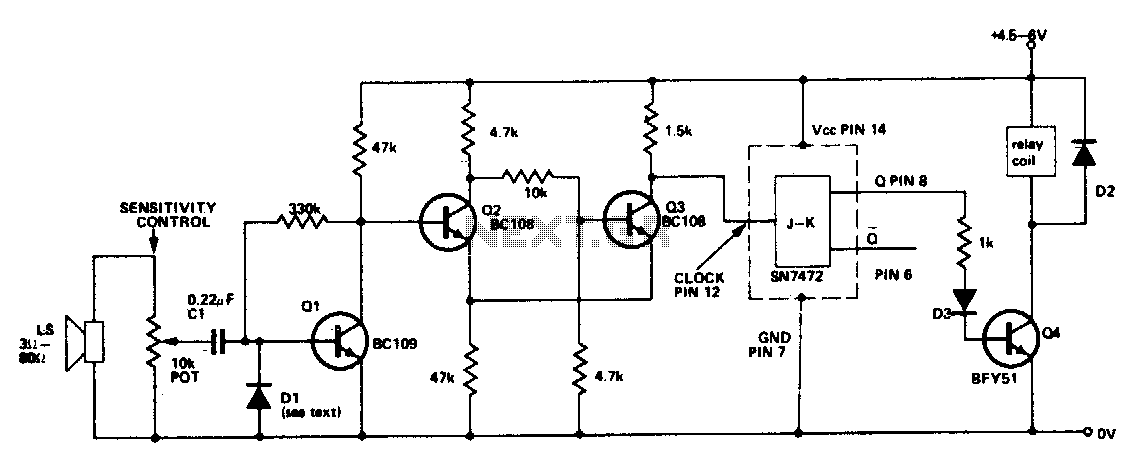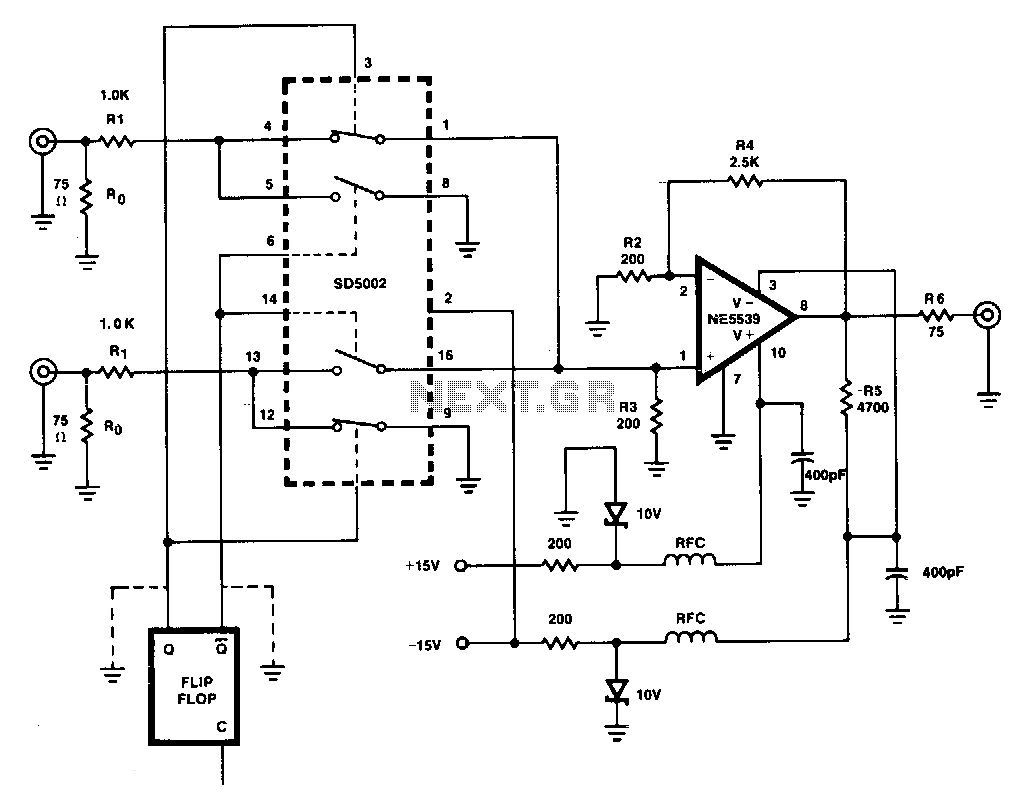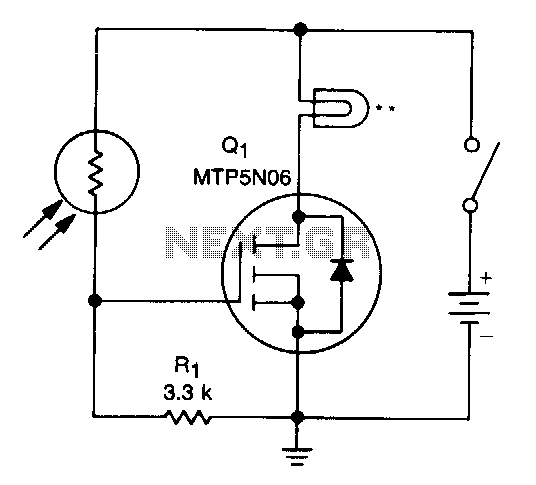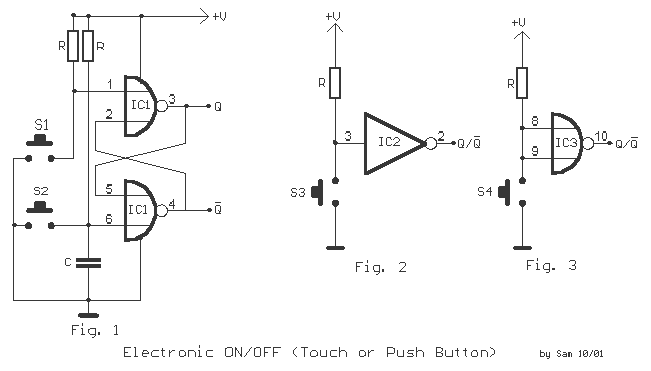
Sound operated two-way switch

This circuit activates a relay in response to sounds of sufficient intensity. A single clap of the hands will switch the relay in one direction, while a second clap will return the circuit to its original state. Q2 and Q3 are configured as a Schmitt trigger. The JK flip-flop is utilized as a bistable device, with its output state changing each time a pulse is applied to the clock input (pin 12). Additionally, Q4 enables the output to drive the relay.
The described circuit employs a sound sensor that detects acoustic signals above a certain threshold. When a sound, such as a clap, is detected, it triggers the Schmitt trigger formed by transistors Q2 and Q3. This configuration ensures that the output is clean and free from noise, providing a stable signal to the subsequent stages of the circuit. The Schmitt trigger outputs a high or low signal based on the input sound intensity, effectively converting the analog sound signal into a digital signal.
The JK flip-flop serves as a bistable multivibrator, which can maintain one of two stable states. The clock input (pin 12) receives the output from the Schmitt trigger, causing the flip-flop to toggle its output state with each detected sound pulse. This toggling action allows for the relay to be switched on with the first clap and off with the second clap, enabling a simple yet effective control mechanism.
Transistor Q4 is utilized to drive the relay, allowing the circuit to control larger loads that the flip-flop output alone cannot handle. When the JK flip-flop output goes high, Q4 is activated, energizing the relay coil and closing the relay contacts, which can then control external devices such as lights or motors.
In summary, the circuit effectively combines sound detection, digital signal processing, and relay control to create a responsive system that can be used in various applications, such as automated lighting systems or sound-activated devices. The careful selection of components and their configuration ensures reliable operation in response to acoustic stimuli.This circuit operates a relay each time a sound of sufficient intensity is made, thus one clap of the hands will switch it one way, a second clap will revert the circuit to the original condition. Q2 and Q3 form a Schmitt trigger. The JK flip-flop isoised as a bistable whose output changes state every time a pulse is applied to the clock input (pin 12)
Q4 allows the output to drive a relay.
The described circuit employs a sound sensor that detects acoustic signals above a certain threshold. When a sound, such as a clap, is detected, it triggers the Schmitt trigger formed by transistors Q2 and Q3. This configuration ensures that the output is clean and free from noise, providing a stable signal to the subsequent stages of the circuit. The Schmitt trigger outputs a high or low signal based on the input sound intensity, effectively converting the analog sound signal into a digital signal.
The JK flip-flop serves as a bistable multivibrator, which can maintain one of two stable states. The clock input (pin 12) receives the output from the Schmitt trigger, causing the flip-flop to toggle its output state with each detected sound pulse. This toggling action allows for the relay to be switched on with the first clap and off with the second clap, enabling a simple yet effective control mechanism.
Transistor Q4 is utilized to drive the relay, allowing the circuit to control larger loads that the flip-flop output alone cannot handle. When the JK flip-flop output goes high, Q4 is activated, energizing the relay coil and closing the relay contacts, which can then control external devices such as lights or motors.
In summary, the circuit effectively combines sound detection, digital signal processing, and relay control to create a responsive system that can be used in various applications, such as automated lighting systems or sound-activated devices. The careful selection of components and their configuration ensures reliable operation in response to acoustic stimuli.This circuit operates a relay each time a sound of sufficient intensity is made, thus one clap of the hands will switch it one way, a second clap will revert the circuit to the original condition. Q2 and Q3 form a Schmitt trigger. The JK flip-flop isoised as a bistable whose output changes state every time a pulse is applied to the clock input (pin 12)
Q4 allows the output to drive a relay.





